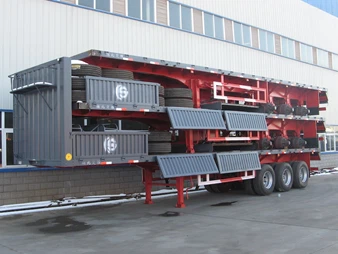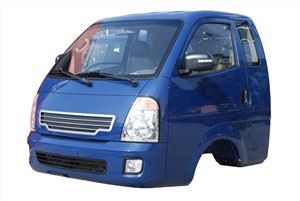Comprehensive Guide to Vacuum Trucks: Everything You Need to Know

Introduction
Vacuum trucks are essential vehicles designed for the efficient removal of liquids, sludges, and debris from various environments. With applications ranging from municipal waste management to industrial cleaning, these trucks play a crucial role in maintaining sanitation and health standards. In this article, we will cover everything from the fundamentals of vacuum trucks to their applications, maintenance, types, and more.
What is a Vacuum Truck?
A vacuum truck is a specialized vehicle equipped with a powerful vacuum system. This system is capable of sucking up liquids, slurries, and solids from various surfaces and transporting them to a designated disposal or treatment site. Typically mounted on a heavy-duty chassis, vacuum trucks come with a storage tank that collects the materials, making them indispensable in various industries.
How Does a Vacuum Truck Work?
The operation of a vacuum truck revolves around two primary components: the vacuum pump and the storage tank. Here’s a step-by-step breakdown:
- Vacuum Creation: The truck uses a vacuum pump to create a low pressure inside the storage tank.
- Suction: This pressure difference allows the vacuum truck to suck in the material through a hose attached to the pump.
- Storage: The collected material is stored in the tank until it is ready for transport.
- Discharge: Once at the disposal site, the material is discharged using gravity or pressure from the tank.
Types of Vacuum Trucks
1. Liquid Vacuum Trucks
Liquid vacuum trucks are designed to handle liquids and slurries, making them ideal for septic tank pumping, grease trap cleaning, and industrial waste removal.
2. Dry Vacuum Trucks
These vacuum trucks are equipped to collect dry materials such as debris, dust, and solids. They are often used in construction sites and for industrial cleanups.

3. Combination Vacuum Trucks
Combination vacuum trucks can handle both liquid and dry materials. They feature specialized tanks and can switch between suctioning liquids and solids, offering versatility for various applications.
4. Hydro-Vac Trucks
Hydro-vac trucks use a high-pressure water jet to liquefy soil and debris, which can then be vacuumed up. These are particularly useful for digging in sensitive environments, like around utility lines.
Applications of Vacuum Trucks
1. Industrial Cleaning
Vacuum trucks are extensively used in manufacturing facilities for cleaning up spills, removing waste, and maintaining a tidy environment.
2. Construction Sites
In construction, vacuum trucks can help clear debris, liquids, and sludge, ensuring a safer and more organized workspace.
3. Municipal Services
Cities utilize vacuum trucks for street cleaning, storm drain maintenance, and waste collection, promoting sanitation and hygiene.
4. Oil and Gas Industry
Vacuum trucks are employed to clean up spills, remove sludge from pits, and maintain equipment hygiene in the oil and gas sector.
5. Environmental Remediation
In remediation projects, vacuum trucks help with cleaning contaminated soils and removing hazardous materials safely.
Benefits of Using Vacuum Trucks
1. Efficiency
Vacuum trucks can remove large volumes of material quickly, significantly reducing manual labor and time.
2. Versatility
These trucks can be adapted for various tasks, from cleaning sewage systems to industrial waste removal, making them essential in numerous fields.
3. Safety
Using vacuum trucks minimizes the risk of spills and exposure to hazardous materials for workers while maintaining a clean work environment.
4. Cost-Effectiveness
Investing in a vacuum truck can decrease overall operational costs by reducing waste disposal fees and minimizing labor costs.
How to Choose the Right Vacuum Truck
1. Determine Your Needs

Assess the types of materials you need to handle—liquids, solids, or a combination—to select the suitable vacuum truck.

2. Consider the Size
Choose a tank size that fits your operational volume. Bigger tanks are essential for high-capacity needs, while smaller trucks can work in more confined spaces.
3. Evaluate the Pump Power
The vacuum pump’s horsepower will dictate how efficiently the truck can operate. Ensure it meets the demands of your typical workload.
4. Look at Features
Different models come with various features such as automatic controls, easy-to-clean filters, and spill containment options. Identify which are essential for your operation.
Maintenance of Vacuum Trucks
1. Regular Inspections
Perform routine checks on hydraulic systems, pumps, and hoses to identify any wear and tear before it leads to malfunction.
2. Cleaning
Always clean the tank and vacuum system after use to prevent corrosive materials from damaging internal components.
3. Report Issues Promptly
If any issues arise during operation, address them immediately to prevent further damage and ensure safety.
4. Schedule Professional Servicing
Hire professional services periodically for comprehensive maintenance and to ensure all systems are functioning correctly.
Practical Examples of Vacuum Truck Usage
| Example | Description | Benefits |
|---|---|---|
| Septic Tank Pumping | Vacuum trucks extract waste from septic tanks efficiently. | Prevents overflow and maintains sanitation. |
| Construction Debris Removal | Removing dirt, concrete, and other materials from sites. | Maintains safety and efficiency on construction sites. |
| Storm Drain Cleaning | Clearing out debris from drainage systems to prevent flooding. | Improves drainage and safety in storm events. |
| Hazardous Material Removal | Safely vacuuming up hazardous waste to avoid spills. | Ensures compliance with environmental regulations. |
Common FAQs About Vacuum Trucks
1. What materials can a vacuum truck handle?
Vacuum trucks can handle liquids, sludges, and solids depending on the type. Some specialized trucks can even manage hazardous materials safely.
2. How often should vacuum trucks be maintained?
Regular maintenance checks should be carried out quarterly, but it’s essential to perform inspections after heavy use or if issues arise.
3. Can I rent a vacuum truck?
Yes, many companies offer vacuum trucks for rent if you have a temporary need or specific project, which can be more cost-effective than purchasing one.
4. What safety measures should be in place when using a vacuum truck?
Operators should wear personal protective equipment (PPE), ensure the area is safe prior to use, and receive proper training on the equipment.
5. How do I dispose of the materials collected by a vacuum truck?
The disposal process will depend on the material type—non-hazardous waste can be taken to a landfill, while hazardous materials may require specific facilities for safe disposal.
6. What is the average cost of purchasing a vacuum truck?
The cost can vary significantly based on the type and specifications of the vacuum truck, ranging from $100,000 to over $500,000 for specialized units.
